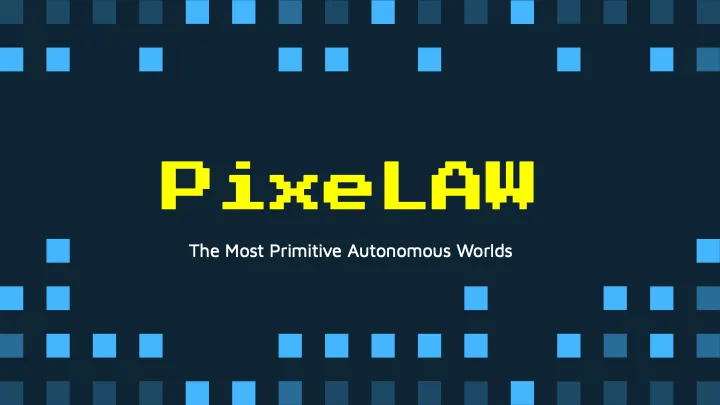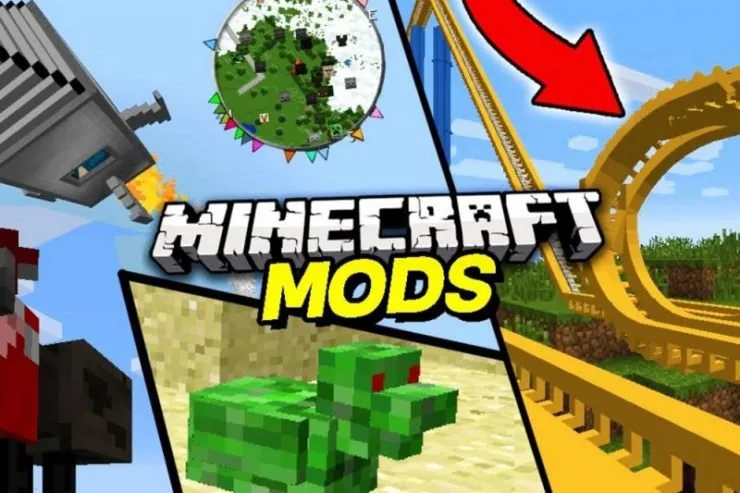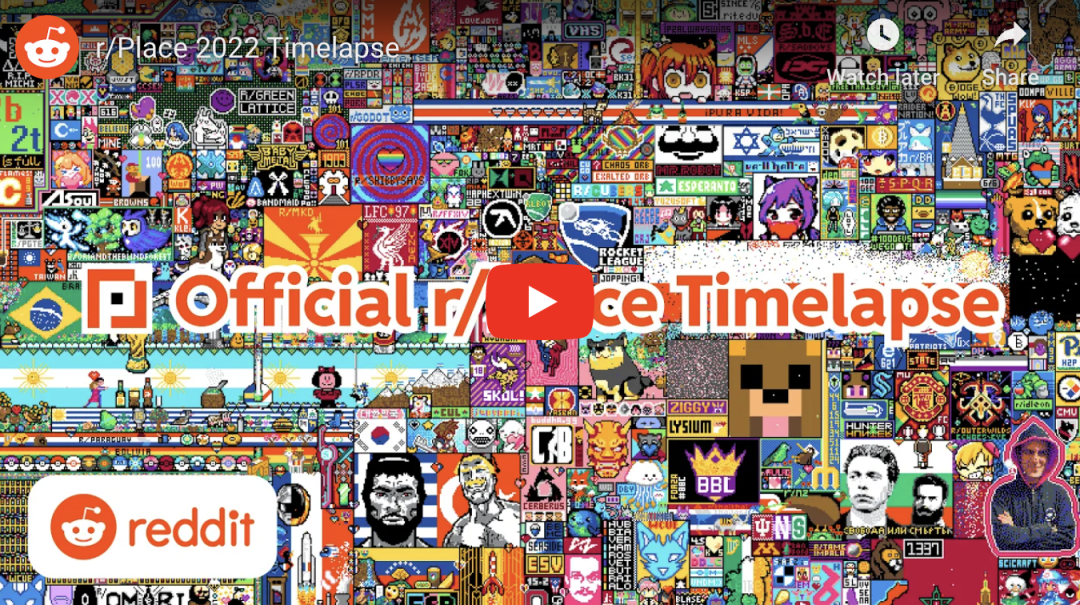Original Title: The Four Reasons We Must Pay Attention to the Autonomous World
Original Author: SYORA

Shot and published by Maxim Hopman on Unsplash
In the previous cryptocurrency bull market bubble cycle, decentralized finance (DeFi) was undoubtedly at the center of the stage. Some believe that in the next bull market, the Autonomous World (AW) will be the tipping point. I believe in this judgment and will explain the reasons in detail in this article.
- With the macro environment improving, can we expect a golden September and silver October market for Bitcoin?
- Crypto Circle Marriage and Love Only Green Candles, No Love
- LianGuai Daily | Virtual asset trading platform JPEX involved an amount of approximately HKD 1 billion; Ant Group plans to exit its investment in A&T Capital.
01. What is the Autonomous World (AW)?
Before diving into the topic, let me first explain what the Autonomous World (AW) is. (There have been many detailed explanations about AW, so let’s keep it short.)
Looking back at history, Bitcoin liberated currency from centralized entities, and Ethereum liberated the operational process through smart contracts. So, what else is yet to be liberated? The answer is the World. And now, through blockchain technology, we have the ability to free the World from centralized entities.
Initially, AW was developed as a fully on-chain game. But we realized that its potential goes beyond gaming—it is a platform for various activities. In other words, it is a true “world”.
Benefiting from the characteristics of blockchain, AW is persistent and open.
The way people create their own worlds will be completely different before and after the birth of AW. Before AW, we had to follow rules set by someone else and couldn’t freely combine. But in AW, things have changed. In AW, we first define the boundaries of the world. Within these boundaries, people can freely combine. Once created, it will autonomously operate regardless of whether you want it or not. In other words, creating an AW is like creating a new planet. We are endowed with the power of creators.
My favorite quote is: “Rocks and deserts on Mars will continue to exist, even if someone no longer believes in the story of Mars, and no one can ‘shut down’ Mars.” – 0xLianGuaiRC.

Shot and published by Daniele Colucci on Unsplash
02. History of “Worlds”
When we talk about AW, we can’t ignore Dark Forest and OPCraft. But let’s not talk about Dark Forest for now, although it showcases the vast potential of AW and is worth exploring in depth.
OPCraft is the on-chain version of Minecraft, created by the MUD team and developed freely by the community. Although it only lasted for about two weeks, it was still full of passion. In the end, a dictatorship emerged in OPCraft. Some may think it was complete chaos, but it was actually inevitable, and the outcome was incredible. This was caused by a bug in the system where players could mine diamonds infinitely, which is the currency in OPCraft.
The person who first discovered this bug gained power and established a dictatorship. In a world where any rule that can be hacked will inevitably be hacked, the attacker ultimately gains power and begins to create new rules. These rules will also be attacked by other hackers, and this cycle will continue.
Furthermore, I believe the most interesting blockchain game at the moment is Curve War. It is a pinnacle battle of wisdom. The winner is the first person to come up with a simple solution.
Isn’t this how our real world history works? It is easy to learn the core ideas of history, but it is much more difficult to create history.
Essentially, people recognize the rules of the world, but sometimes these rules have flaws or can allow individuals to gain greater benefits. As a result, people may hack the existing system and create new rules, reshaping history in the process.

Binance's article on what Curve Finance is in DeFi: https://academy.binance.com/en/articles/what-is-curve-finance-in-defi
After establishing an understanding of the world, we can now delve deeper into the subject.
03. Why We Must Pay Attention to Autonomous World (AW)
Reason 1: Creating a New Game Genre: Metagame
The history of the world can be reinterpreted as a history of establishing new orders and breaking old ones. Those who benefit from the change, as well as those who are affected by the collapse of the existing order, are limited in number. After all, only a few people can truly understand the current world situation.
However, from OPCraft and Curve War, we can see that such interesting games only allow a very limited number of people to participate, which is quite unfortunate. I call this kind of game a “metagame”. This game does not occur within the world of the game, but rather in a higher dimension than the game world. (That is to say, this game is not played according to the rules of the game, but by utilizing or breaking these rules.) Even though we have simulation games like “Civilization”, the “metagame” is still something completely different, with its freedom reflected in a higher dimension (breaking existing rules).

Screenshot of the game "Civilization"
Now, we are in an era where we can experience the “metagame”, which is what we call AW. In AW, players can easily understand the true state of the “world”, so the opportunity to break the rules of the world is given to everyone.
AW defines the rules of the world through smart contracts, so if you can read the code, you can easily understand the true state of the world. Compared to the current situation where only the privileged class can understand the real-world rules, this is such a low barrier! People no longer need to pay huge bribes to obtain real information!
Next, the opportunity to define the “world” rules is open to anyone. Anyone can propose improvements to the world rules and engage in public discussion. As long as it is approved by the community, the existing rules can be changed.
If you can create a rule that only you understand its flaws, deceive the community to pass it and implement it, you can even become the king of the world. Of course, you also need to consider the possibility of a hard fork. This will be such an interesting and novel intellectual game!
At the same time, this frees people from external conditions such as background and social status, greatly increasing the number of smart people participating in world politics, which will significantly accelerate the pace of improving world rules. Since the world is generally developing towards a better direction, the speed of making the world better will also increase. I even believe that this could become an experimental field for improving real-world rules.
Some people may think that because AW is defined by fixed smart contracts, it is still difficult to support such a metagame. However, the project PixeLAW we are working on (as the name suggests) can make this metagame possible.
Simply put, PixeLAW is based on very basic rule creation. These rules are about land (array of pixels: an array in the form of pixels), how to establish “rules of rules,” and some design elements to increase fun (although the details are not fully determined yet…). By allowing players to establish their own rules within a limited scope, PixeLAW makes the metagame possible.
To ensure that PixeLAW can support the metagame, we plan to start adjusting the world’s rules by a DAO (decentralized autonomous organization) after the initial rules are determined.

Reason 2: Composability achieved through the community
The second important reason is the composability of AW. Isn’t this the most emphasized point when introducing AW? Composability means that the community can freely add “components” to AW. The boundaries of the AW world are not defined by its “components,” but by the boundaries of the “world” smart contract. Therefore, as long as the added “components” are within this boundary, they can be freely added. The ECS (Entity Component System) system greatly facilitates this composability. If you want to learn more, please check out this page (https://book.dojoengine.org/framework/cairo/overview.html) or this page (https://mud.dev/ecs) for details.
The potential brought by composability promotes development. In the current gaming industry, even with great ideas, there are hardly any opportunities for additional development. Although there are games like Minecraft that have achieved community composability, they are very limited. But in AW, there is no such problem.

Many MODs in Minecraft
I want to think more deeply about composability, but I am skeptical about whether it is completely permissionless. I believe that when adding a new “system” that “restricts users,” it needs to be approved by the community. However, if it does not impose any restrictions on the user’s existing capabilities, then adding new games and “systems” or adding “components” to them should be permissionless.
Reason 3: Interoperability between games
AW is not just an on-chain game, but also a new virtual world. Currently, many people still consider AW as a game, but that is not the case. On a single AW, there can be multiple games and other infrastructure, such as a trading market and DEX. These should be defined by a smart contract that determines the boundaries of the world, and as long as they exist within these boundaries, interoperability can be achieved.
In the current game industry, it is very difficult to create complex interactions between multiple games, but on AW, this will become very simple. This is still a very novel concept, and no one knows if it will work well and provide new and interesting experiences, but it is worth trying and exploring.
AW: PixeLAW, which we are currently building, has attracted attention from the community because of these characteristics. In simple terms, PixeLAW is a pixel-based AW, but it is designed to maximize the characteristics of AW that I envision. In PixeLAW, each pixel has an RGB value, and these numbers can be used as information for building systems (including games).
For example, you can build a Snake game by considering green blocks as snakes, or play Rock-Paper-Scissors by assigning roles to three colors. These games coexist on a single AW. Here, we can consider interactions between different games.
For example, the snake dies when it collides with a pixel representing “rock,” and it grows longer when it collides with a pixel representing “paper,” and it becomes shorter when it collides with a pixel representing “scissors.” We can consider implementing interactions between games in a similar form. Although it may not seem attractive at this stage, like a toy for children, there will definitely be new gameplay waiting to be discovered in the future.
Let’s develop and explore together.
Reason 4: Customizable frontend
One notable feature of AW is that you can change the appearance of the world (frontend display). The essence of AW is that the boundaries of its world are defined by smart contracts, and the state of the world is stored on the chain. Therefore, fundamentally, it is a state machine. This means that only mechanical information is engraved on the blockchain, and the appearance is independent of the core definition of AW and can be freely changed by players.
Let’s take PixeLAW as an example again.
On the surface, PixeLAW is pixel art. However, inside its state, each pixel has coordinates and RGB values. From here, when considering the construction of the frontend, the simplest solution is a pixel image. It is sufficient to faithfully display the position and RGB value (color). As shown in r/place, pixel art itself is interesting.

r/Place 2022 Timestamp, link: https://www.youtube.com/watch?v=K5O3UgLG2Jw
Next, let’s imagine the situation after the game is deployed. Suppose this game is built on the “system” level. For example, to improve the visual effects, let’s assume that a “component” called Unicode is added to represent emoji symbols.
At this point, for an AW, the first frontend still displays pixel art, while another frontend can display emoji symbols representing the game state. You can use different frontends according to your needs.
Furthermore, the possibilities for enhancing the frontend for a better user experience are endless. For example, a brand new frontend can be prepared for a rock-paper-scissors game that only focuses on a single pixel.
And since creating a new frontend does not change the boundaries or state of the AW, you can freely create. As long as the state of the AW is not changed, you can make any modifications to the presentation of the frontend to improve the user experience.
Endless possibilities are waiting for you to explore.
04. Conclusion
The Autonomous World (AW) has four notable reasons:
- New game types: achievable fair metagames;
- Assured composability at the community level;
- Interoperability, especially interaction between games;
- Customizable user experience (UX) and frontend;
Are these new to you? It’s normal because you are an early participant.
Like what you're reading? Subscribe to our top stories.
We will continue to update Gambling Chain; if you have any questions or suggestions, please contact us!